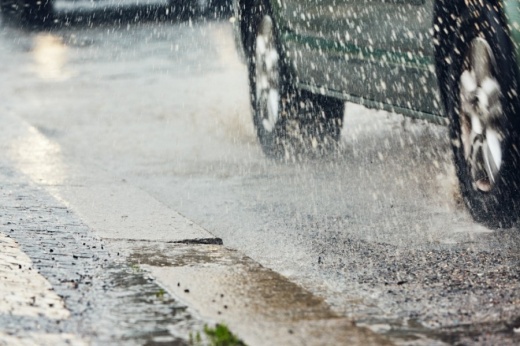As of the 1 p.m. press conference, mandatory evacuations had been issued in Jasper, Jefferson, Newton and Orange counties, as well as in the cities of Galveston and Port Arthur. Additionally, voluntary evacuations had been issued in Chambers and Brazoria counties; Harris County ZIP code zones A and B; and the cities of Nassau Bay, Seabrook, Tikki Island, Jamaica Beach and Bolivar Peninsula.
"If you are subject to one of these evacuation orders, you need to be doing all you can to make sure that you take the action that needs to be taken to protect your life," Abbott said during the press conference. "Those who stay behind may be caught in a situation where rescue teams may be challenged in being able to rescue [you] from a situation that could cause you to lose your life. So please heed local warnings so that you can take the action in advance that is needed."
Abbott announced several evacuations centers that are expected to open beginning Aug. 25 at the following locations:
- 254 Gembler Road, San Antonio, at 3 p.m.
- 9201 Circuit of the Americas Blvd., Austin, at 4 p.m.
- 15515 I-20 E., Mesquite, at 7 p.m.
- 850 I-45 S., Ennis (opening time TBA)
"Remember, just because a hurricane is coming to Texas does not mean that COVID-19 has or is going to leave Texas; COVID-19 is going to be in Texas throughout the course of the hurricane," Abbott said. "As a result, everyone must ensure that they protect their lives also from contracting COVID-19. ... One of the safe ways you can do that if you're having to evacuate is to try to evacuate to a hotel/motel room so that you and your family members can be isolated from others with whom you could come in contact with, with whom you could contract COVID-19."
Abbott said the state already has 200 buses at its disposal to transport evacuees with an additional 200 on the way, which will also be armed with protective and disinfecting equipment.
"We are responding to Hurricane Laura while also responding to a pandemic, and we are not taking our eye off of what needs to be done to adequately respond to the pandemic," Abbott said. "So several things are being done as we assist those who are evacuating that's different from what has been done in the past. One is for the buses that are being used—state or local—they are reducing the number of people in a bus; it's not going to be as crowded as it has been in the past, which is one reason why we have the need for so many buses to be able to transport people but also to make multiple trips so that through a reduction in the number of people in the bus we will be able to reduce the potential spread of COVID-19."
In the event that additional evacuation centers with congregate settings are needed, Nim Kidd, the chief of the Texas Division of Emergency Management, said COVID-19 testing will be available at those locations as well.
"The bottom line is this: State and local governments are fully aware that they are dealing with a pandemic while they are responding to Hurricane Laura and they are taking all necessary protocols to make sure that they reduce the spread of COVID-19," Abbott said. "I have no doubt that [with this] oncoming hurricane as well as with the pandemic ... traditional Texas resiliency and perseverance will once again elevate us as we respond to this challenge."





